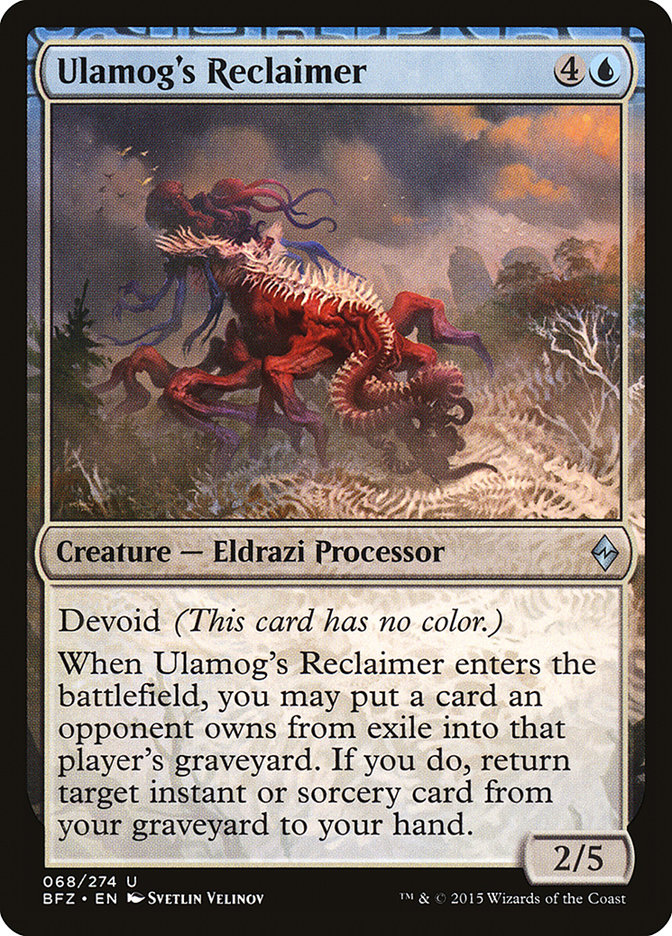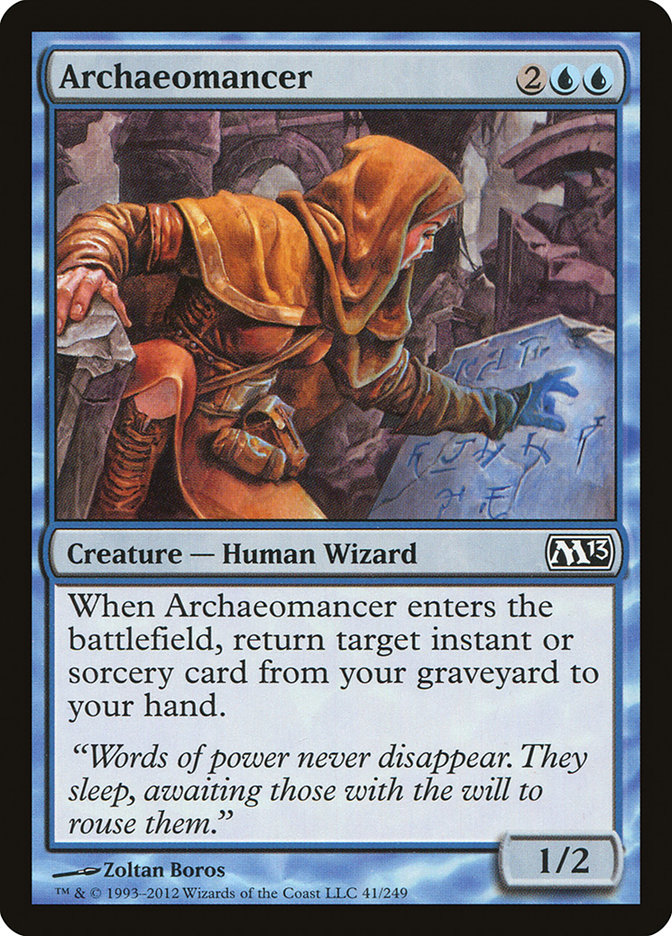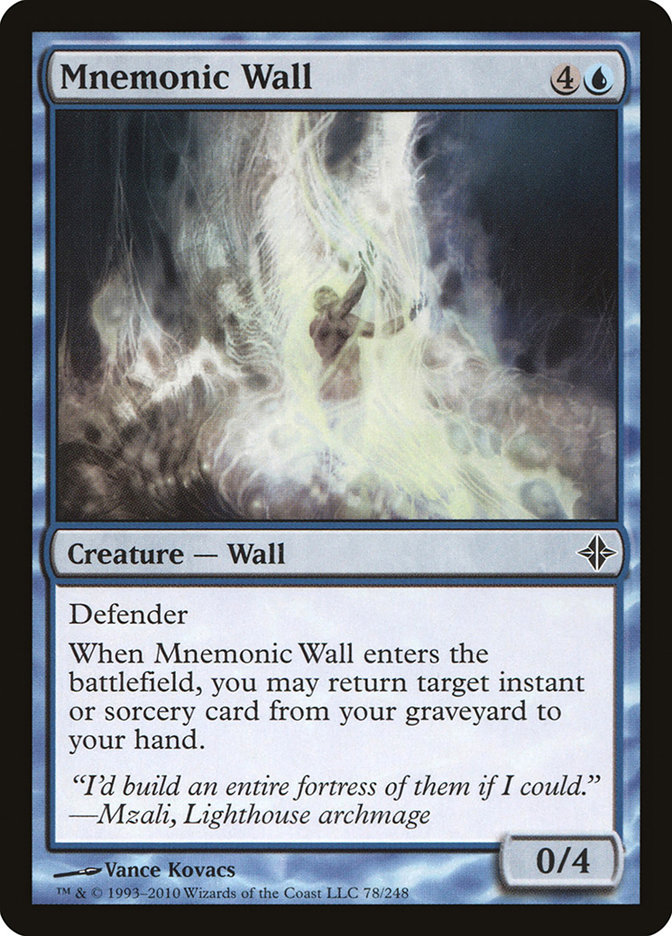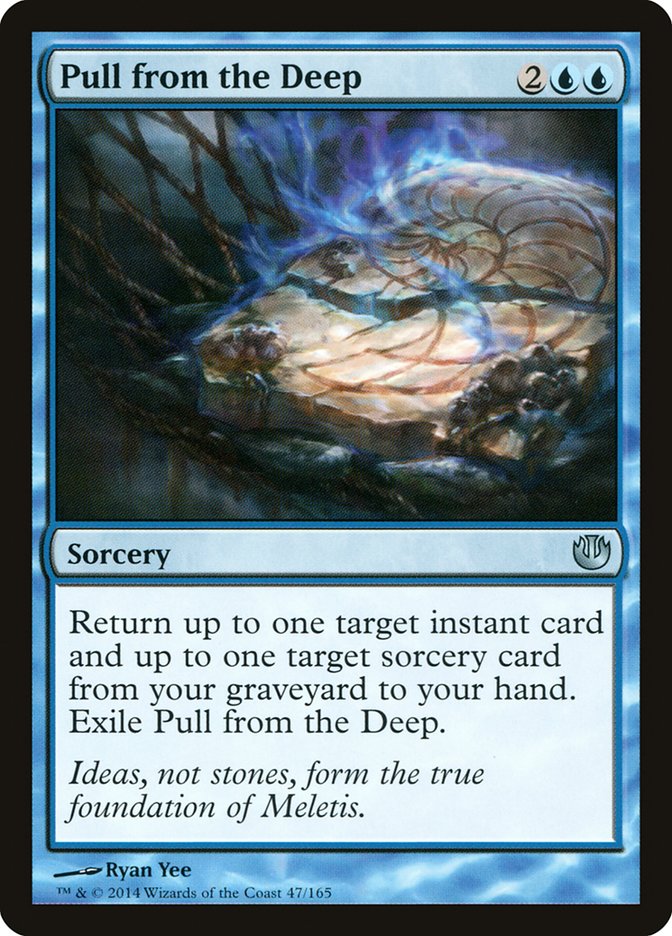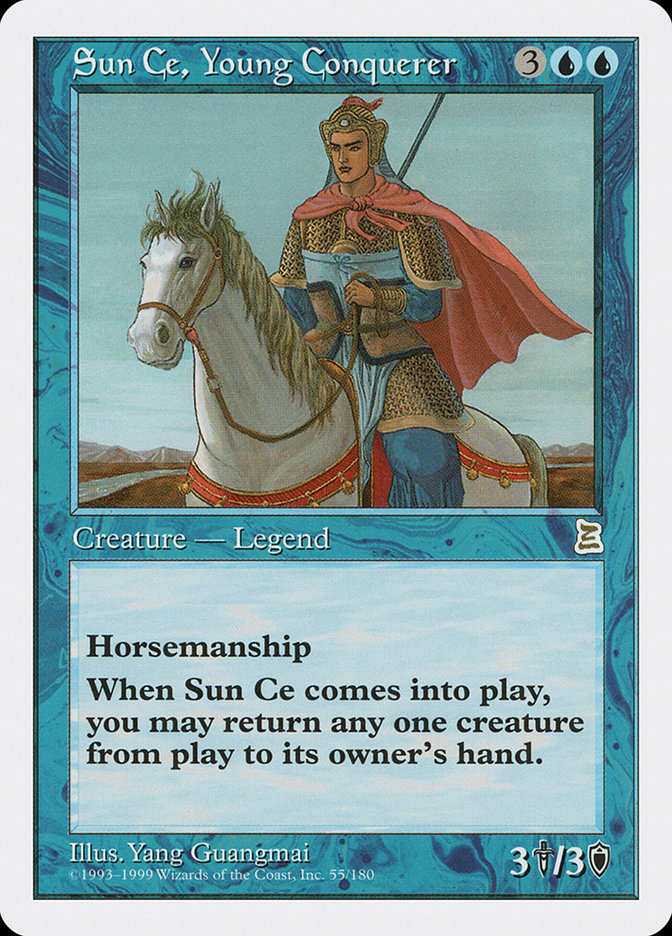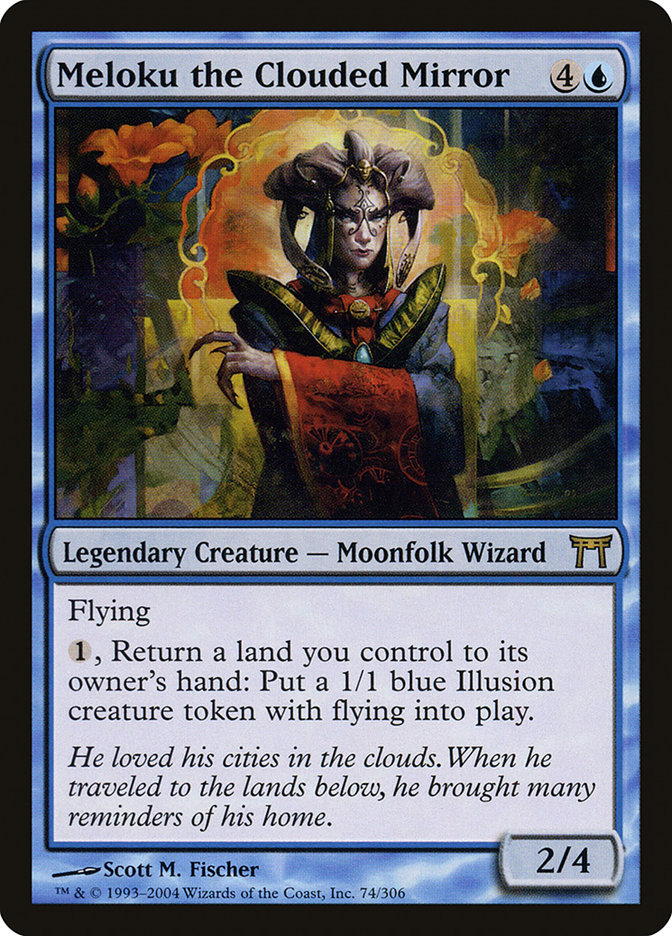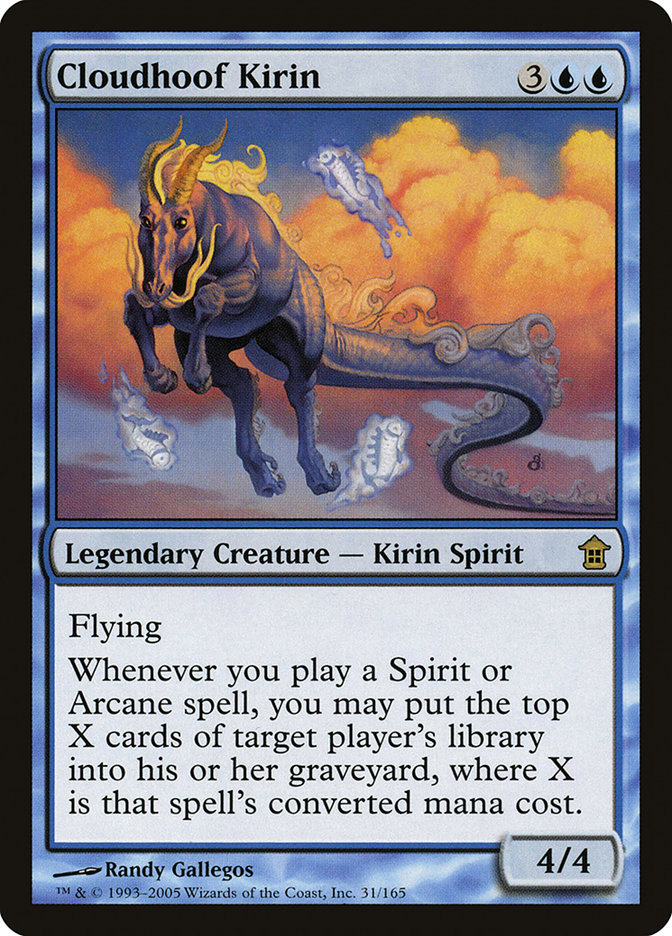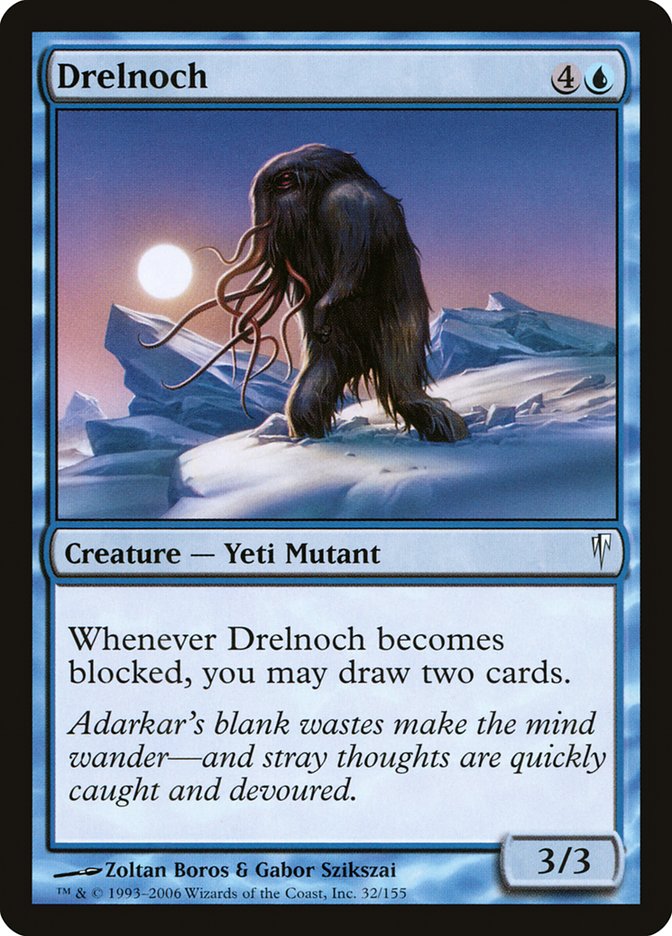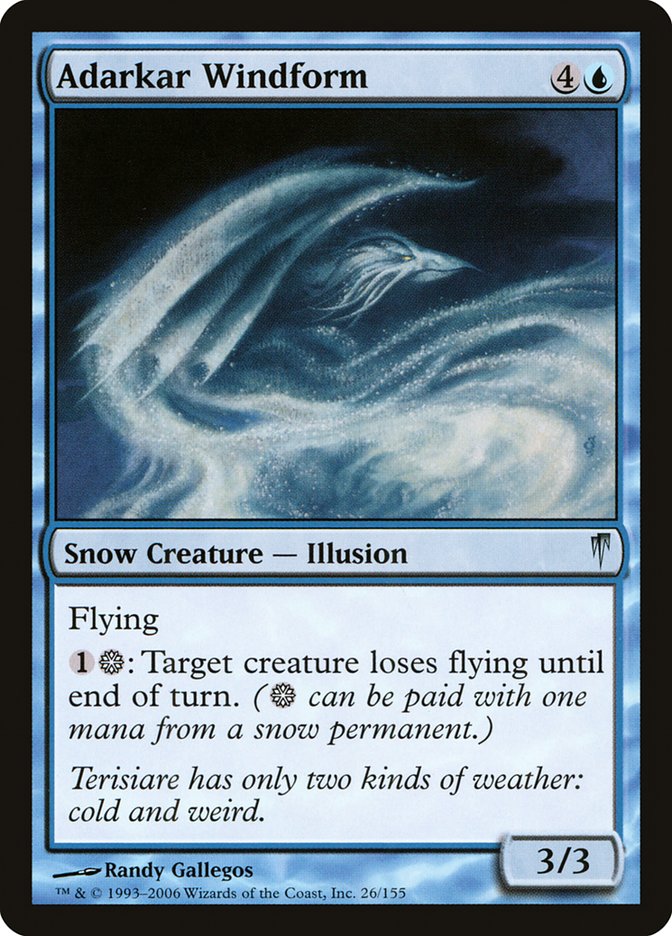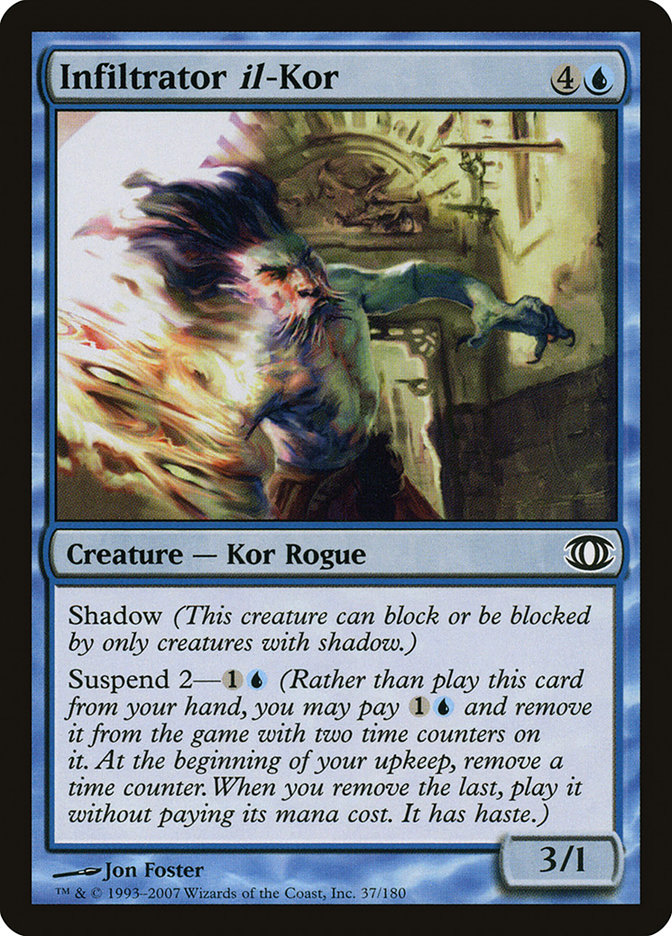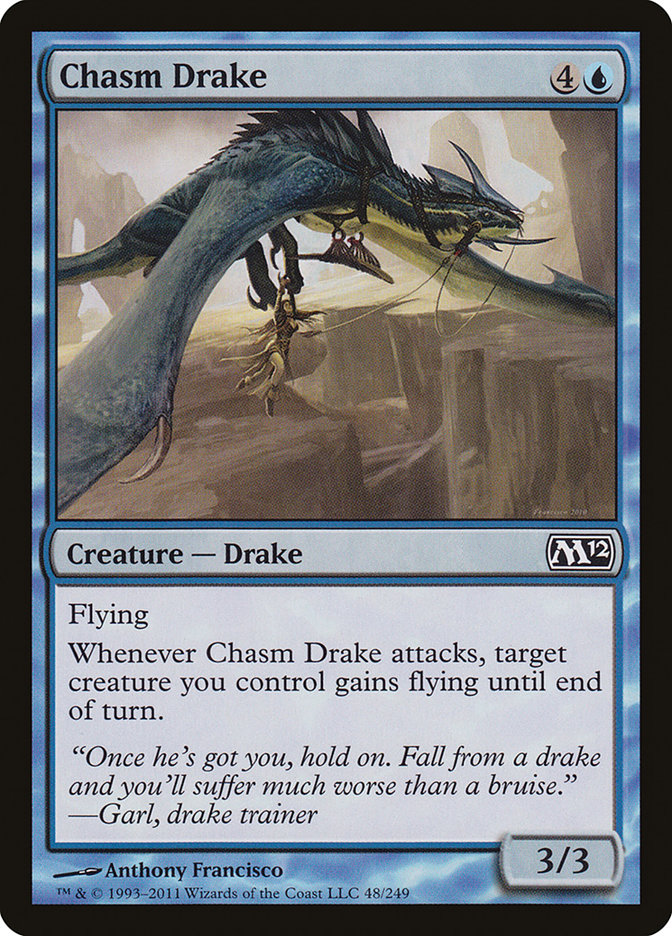Recobrador de Ulamog Carta MTG
| El coste de maná | |
| Costo de maná convertido | 5 |
| Rareza | Poco común |
| Tipo | Criatura — Metabolizador eldrazi |
| Habilidades | Devoid |
| Liberado | 2015-10-02 |
| Coleccione símbolo | |
| Coleccione nombre | Battle for Zendikar |
| Coleccione código | BFZ |
| Fuerza | 2 |
| Tenacidad | 5 |
| Número | 68 |
| Frame | 2015 |
| Disposición | Normal |
| Border | Negra |
| Ilustrado por | Svetlin Velinov |
Texto de la carta
Vacío. (Esta carta no tiene ningún color.)Cuando el Recobrador de Ulamog entre al campo de batalla, puedes poner en el cementerio de un oponente una carta del exilio de la que ese jugador sea propietario. Si lo haces, regresa la carta de instantáneo o de conjuro objetivo de tu cementerio a tu mano.
Cartas Similares
El Recuperador de Ulamog destaca en el campo de los mecanismos de recursión, ya que le permite al jugador lanzar una carta instantánea o de conjuro desde su cementerio. Esta habilidad poderosa recuerda a cartas como Arqueomante, que también devuelve una carta instantánea o de conjuro desde el cementerio a la mano de su dueño, aunque sin el bono de lanzamiento. Al eludir la recuperación a la mano y en su lugar permitir un lanzamiento directo, el Recuperador de Ulamog proporciona un flujo suave de mecánicas de juego e impacto potencial en el tablero.
Luego está el Muro Mnemónico, una criatura que ofrece una habilidad comparable a la del Recuperador. También recupera una carta instantánea o de conjuro al entrar al campo de batalla. Sin embargo, el muro es solo eso—un mecanismo de defensa sin la ventaja adicional de facilitar un nuevo lanzamiento como lo hace el Recuperador. Por último, debemos considerar una alternativa como Recuperar del Mar. Este hechizo puede rescatar dos cartas—un conjuro y una instantánea—pero las coloca en tu mano en lugar de permitir un lanzamiento directo, distinguiendo la acción inmediata del Recuperador de Ulamog de la recuperación más lenta basada en la mano.
En general, el Recuperador de Ulamog ofrece una combinación única de interacción con el cementerio y lanzamiento instantáneo que lo posiciona como una fuerza potente dentro de Magic: The Gathering, mejorando estrategias que capitalizan en el valor recurrente desde el cementerio.
Cartas similares a Recobrador de Ulamog por color, tipo y coste de maná
Aspectos Positivos de la Carta
Ventaja de Carta: Ulamog’s Reclaimer te permite recuperar recurrentemente hechizos críticos de tu cementerio, expandiendo efectivamente tu mano y proporcionando un flujo constante de recursos a lo largo del juego.
Aceleración de Recursos: Esta imponente criatura puede acelerar tu juego al permitirte lanzar hechizos costosos antes de lo habitual, gracias a su capacidad de volver a lanzar hechizos potencialmente costosos desde el cementerio.
Velocidad Instantánea: La capacidad de utilizar la habilidad de Ulamog’s Reclaimer a velocidad instantánea te brinda la flexibilidad para adaptarte a cambios en el estado del juego, proteger piezas clave o perturbar las estrategias de los oponentes en momentos cruciales.
Aspectos Negativos de la Carta
Requisito de Descarte: Ulamog’s Reclaimer exige que exilies dos cartas de tu cementerio para activar su habilidad. Este requisito puede ser exigente para tu mano, particularmente en estrategias donde tu cementerio desempeña un papel crucial o no se llena lo suficientemente rápido para sustentar usos repetidos.
Requisito de Maná Específico: El maná incoloro en el costo de maná de Ulamog’s Reclaimer implica que tu mazo pueda producir maná incoloro de manera confiable, lo que puede complicar el proceso de construcción del mazo y limitar su integración en diversos arquetipos.
Coste de Maná Comparativamente Alto: La inversión de cinco manás por una criatura 2/3 con la habilidad descrita puede disuadir a algunos jugadores, ya que hay criaturas y hechizos alternativos en este rango de maná que podrían ofrecer un impacto o valor más inmediato en el campo de batalla.
Razones para Incluir en tu Colección
Versatilidad: Ulamog’s Reclaimer puede ser una adición adecuada a numerosos tipos de mazo. Destaca en estrategias que se benefician de su habilidad para recuperar hechizos vitales desde el cementerio, asegurando una utilidad repetida de tus cartas más impactantes.
Potencial de Combo: La capacidad de esta criatura para lanzar cartas exiliadas ofrece sinergias con varios temas de manipulación de cementerios y exilio. Integrarla en configuraciones que exilien cartas incidentalmente puede desbloquear nuevos niveles de profundidad estratégica e interacción.
Relevancia en el Metajuego: En un entorno donde los hechizos clave pueden determinar el resultado de una partida, Ulamog’s Reclaimer se mantiene firme al proporcionar un acceso constante a esos hechizos. Puede influir significativamente en partidas donde la persistencia y el reciclaje de recursos son fundamentales.
Cómo Vencer a Ulamog’s Reclaimer
Contrarrestar a Ulamog’s Reclaimer requiere tanto planificación estratégica como ejecución oportuna en tu juego de MTG. Como carta de criatura formidable conocida por su capacidad para devolver poderosas cartas instantáneas o de conjuro desde el cementerio, cortar su potencial temprano es esencial. Esto implica mantener la interacción con el cementerio al mínimo o utilizar cartas de odio al cementerio como Reposo en la Paz o Cripta de Tormod para neutralizar su habilidad de recuperación.
Los hechizos de eliminación directa también son altamente efectivos contra Ulamog’s Reclaimer. Cartas con efectos de exilio, como Camino al Exilio o Espadas en Rejas de Arado, pueden asegurarse de que no tenga la oportunidad de usar sus habilidades. Además, dado que Ulamog’s Reclaimer requiere de un disparador para aprovechar su efecto, la eliminación a velocidad instantánea en respuesta al disparador puede garantizar que tu oponente no tome la delantera.
Otro consejo es aprovechar el coste de lanzamiento y las condiciones del Reclaimer. Siendo una carta de juego tardío, puedes mantener la presión con un juego temprano agresivo para mantener a tu oponente a la defensiva. De esta manera, potencialmente puedes cerrar la partida antes de que Ulamog’s Reclaimer pueda hacer un retorno impactante desde el cementerio, demostrando la importancia del tempo en tu estrategia general.
Donde comprar
Si estás buscando comprar una carta MTG Recobrador de Ulamog de un coleccione específico como Battle for Zendikar, existen varias opciones confiables que debes considerar. Una de las fuentes principales es tu tienda de juegos local, donde a menudo puedes encontrar paquetes de refuerzo, cartas individuales y mazos preconstruidos de colecciones actuales y pasadas. A menudo ofrecen el beneficio adicional de una comunidad donde puedes intercambiar con otros jugadores.
Para un inventario más amplio, particularmente de colecciones más antiguos, mercados en línea como TCGPlayer, Card Kingdom y Card Market ofrecen amplias selecciones y te permiten buscar cartas de colecciones específicos. Las plataformas de comercio electrónico más grandes como eBay y Amazon también tienen listados de varios vendedores, lo que puede ser un buen lugar para buscar productos sellados y hallazgos raros.
Además, el sitio oficial de Magic suele tener un localizador de tiendas y listas de minoristas para encontrar Wizards of the Productos con licencia costera. Recuerde comprobar la autenticidad y el estado de las cartas al comprarlas, especialmente a vendedores individuales en mercados más grandes.
A continuación se muestra una lista de algunos sitios web de tiendas donde puede comprar las Recobrador de Ulamog y otras cartas MTG:
 COMPRAR
COMPRAR BurnMana es un socio oficial de TCGPlayer
- eBay
- Card Kingdom
- Card Market
- Star City Games
- CoolStuffInc
- MTG Mint Card
- Hareruya
- Troll and Toad
- ABU Games
- Card Hoarder Magic Online
- MTGO Traders Magic Online
Ver productos MTG
Legalidades
Formatos de Magic the Gathering donde Recobrador de Ulamog tiene restricciones
| Formato | Legalidad |
|---|---|
| Commander | Legal |
| Legacy | Legal |
| Paupercommander | Restringido |
| Modern | Legal |
| Oathbreaker | Legal |
| Vintage | Legal |
| Duel | Legal |
| Pioneer | Legal |
Reglas e información
La guía de referencia para las reglas de las cartas Recobrador de Ulamog de Magic: The Gathering proporciona las reglas oficiales, las erratas emitidas, así como un registro de todas las modificaciones funcionales que se han producido.
| Fecha | Texto |
|---|---|
| 25/08/2015 | Una carta con vacío es simplemente incolora. No es incolora y los colores de mana en su costo de mana. |
| 25/08/2015 | Las cartas con el uso privado carecen de marcos que son variaciones del marco transparente tradicionalmente utilizado para Eldrazi. La parte superior de la carta presenta algo de color sobre un fondo basado en la textura de los hedrones que una vez encarcelaron a los Eldrazi. Esta coloración está destinada a ayudar en la construcción de mazos y en el juego. |
| 25/08/2015 | Devoid funciona en todas las zonas, no solo en el campo de batalla. |
| 25/08/2015 | Las cartas boca abajo en el exilio se agrupan usando dos criterios: qué las exilió boca abajo y cuándo fueron exiliadas boca abajo. Si deseas poner una carta boca abajo en el exilio en el cementerio de su dueño, primero debes elegir uno de estos grupos y luego elegir una carta al azar de ese grupo. Por ejemplo, digamos que un artefacto hace que tu oponente exilie sus tres cartas de la mano boca abajo. Luego, en un turno posterior, ese artefacto hace que tu oponente exilie otras dos cartas boca abajo. Si usas Estrangulador de páramos para poner una de esas cartas en su cementerio, elegirías el primer o segundo montón y pondrías una carta elegida al azar de ese montón en el cementerio. |
| 25/08/2015 | Si una carta pierde la capacidad de despojo, seguirá siendo incolora. Esto se debe a que los efectos que cambian el color de un objeto (como el que crea la capacidad de despojo) se consideran antes de que el objeto pierda la capacidad de despojo. |
| 25/08/2015 | Si un efecto de reemplazo hace que las cartas que serían puestas en un cementerio desde cualquier lugar se exilien en su lugar (como el creado por Anafenza, la que Abre el Camino), aún puedes poner una carta exiliada en el cementerio de su oponente. La carta se convierte en un nuevo objeto y permanece en el exilio. En esta situación, no puedes usar una única carta exiliada si se requiere poner más de una carta exiliada en el cementerio. Por el contrario, podrías usar la misma carta en esta situación si dos hechizos o habilidades separadas te exigieran poner una única carta exiliada en el cementerio de su dueño. |
| 25/08/2015 | Si un hechizo o habilidad requiere que pongas más de una carta desterrada en el cementerio, puedes elegir cartas propiedad de diferentes oponentes. Cada carta elegida se pondrá en el cementerio de su dueño. |
| 25/08/2015 | Otras cartas y habilidades pueden darle a una carta un color sin contenido. Si eso sucede, solo es el nuevo color, no ese color y sin color. |
| 25/08/2015 | No se pueden mirar las cartas boca abajo en el exilio a menos que un efecto te lo permita. |
